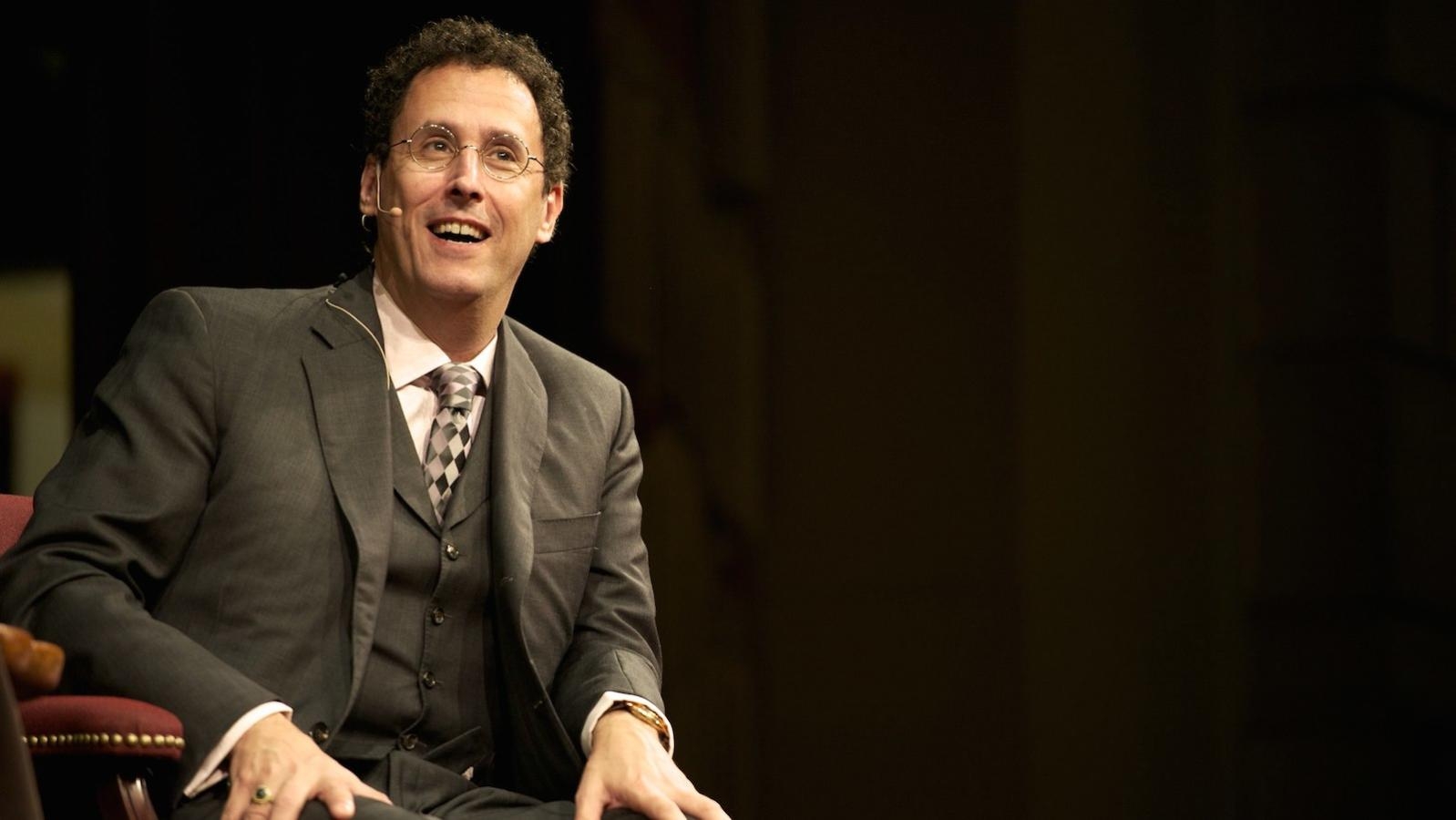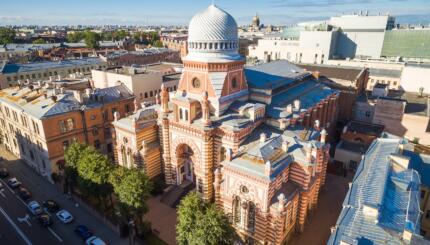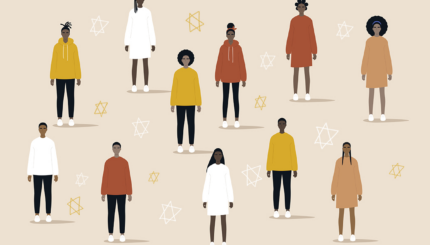“People ask me often, ‘Why do you write in a dying language?'” Isaac Bashevis Singer told a crowd in 1978. Citing his love for ghost stories, he explained, “The deader the language the more alive is the ghost. Ghosts love Yiddish and as far as I know, they all speak it.”
Singer’s final response to the question touched upon the difficult question of identity that continues to plague Jewish theater in America: “Yiddish may be a dying language but it is the only language I know well. Yiddish is my mother language, and a mother is never really dead.”
Jewish theater began in America as an attempt to preserve the culture of the Eastern European , and as the old collided with the new, Jewish playwrights, actors and theatre owners resurrected it and helped it evolve into a distinctly American Jewish theater.
Jewish theater thrived in America first as a primarily Yiddish enterprise, and later in a more distinctly American variety. Ellen Schiff observed in her book Awake and Singing that the term “Jewish Theater” is so ambiguous that some theatergoers still call into the box office to inquire if a show billed as Jewish theater will be performed in English or Yiddish. Surely this number is quickly dwindling, but it attests to an ambiguity that is sharply felt by theater patrons.

Help us keep Jewish knowledge accessible to millions of people around the world.
Your donation to My Jewish Learning fuels endless journeys of Jewish discovery. With your help, My Jewish Learning can continue to provide nonstop opportunities for learning, connection and growth.
While many question just what is Jewish about Jewish theater, what is clear is that the nostalgia of the Yiddish theater in America in the late 19th century, pining for the lost shtetl life, gave way over the next century to a new thriving Jewish theater world. This new realm was and is more forward-thinking and postmodern in its identity.
The Early Years: New York’s Yiddish Theater
Nearly three and a half million Jews immigrated to America between 1881 and 1925, primarily from Eastern Europe to the Northeast coast. Yiddish theater appealed to these Yiddish-speaking immigrants, and many have argued that the theater was a unique place of Jewish community gathering, where classes and religious denominations would mingle. Early theaters such as the People’s, Thalia and Windsor hosted performances of Yiddish plays just on weekends and Jewish holidays.
In 1903, the Grand Theatre opened as the first place to specialize in Yiddish plays. Three years earlier, The Hebrew Actors Union was founded; Actors’ Equity, the major actors’ union still operative today, was only to arrive on the scene in 1920. Later theaters in New York included the Second Avenue Theater, the National, the Yiddish Art Theater and the Public. By producing all-Yiddish plays, these theaters transparently revealed whom they viewed as their target audience. Only later would Jewish theater appeal to a more diverse audience.
Avram Goldfadn (1840-1908), who arrived in New York in 1904, is generally regarded as the father of modern Yiddish theatre. The newspaper the Jewish Messenger calls an 1882 performance in New York of Goldfadn’s “The Witch” (1877) the first Yiddish play performed in America.
Jacob Adler (1855-1926) arrived in New York by way of Odessa and London, after Yiddish theatre was banned in Russia. An actor, Adler worked with writer Jacob Gordin (1853-1909) to Americanize Yiddish theatre. For example, whereas Shakespeare’s Shylock had traditionally been played as a madman, Adler chose to play the Jewish moneylender in the 1901 Yiddish performance of Merchant of Venice as a man “with high intellect, proud convictions, and grand character,” who was “governed by pride rather than courage.”
Adler also played the old king in Gordin’s Der Yiddisher King Lear (The Yiddish King Lear). Gordin was a prolific writer, adding nearly 80 plays to the world of Yiddish theatre and once referred to his own writing as “like a scribe at work on the holy Torah.”
Emerging Personalities
Yiddish theater spread beyond New York to Philadelphia, Boston, Chicago, Detroit, and Cleveland, and by 1927, 24 theaters still performed Yiddish plays. But in the following years, Yiddish theater began to decline, with the end of the immigration wave and the decline of Yiddish.
A new generation of American Jews received the mantel from their foreign-born artistic predecessors. The New York-born Samson Raphaelson (1894-1983) wrote The Jazz Singer in 1925, and Al Jolson (1886-1950) played the lead in the 1927 movie version. In the play, Jakie Rabinowitz abandons his past, his father, and his love for cantorial music to become the American jazz singer Jack Robin.
While Clifford Odets’ (1906-1963) Till the Day I Die (1935) explored Nazi attacks on Communists rather than Jews, his play Awake and Sing! (1935) addressed more specifically Jewish themes, telling the story of a large New York Jewish family. Jewish musicians like Irving Berlin (1888-1989), George Gershwin (1898-1937), and Leonard Bernstein (1918-1990) wrote lyrics and music for numerous shows.
Gershwin alone composed music for 20 Broadway musicals. Although debates center on the question of whether these composers drew from their Jewish heritage in their music, some works are undeniably Jewish, like Bernstein’s 1963 symphony that drew from the Mourner’s Kaddish.
Zero Mostel (1915-1977) famously played Tevye in Jerry Bock’s Fiddler on the Roof (1964), based on stories by Shalom Aleichem. He also portrayed Max Bialystock in Mel Brook’s film, The Producers (1968).
Arthur Miller (1915-2000) often depicted Jews or crypto-Jews in his plays, as some critics have suggested of Willy Loman in Miller’s Death of a Salesman (1949). Miller’s The American Clock (1980), Playing for Time (1980), and Broken Glass (1994) all portray Jews and Jewish themes.
Jewish Theater Today
Born in 1947, David Mamet is one of the best known American Jewish playwrights today. In his The Old Neighborhood (1997), set in Chicago, the first act of three is called “The Disappearance of the Jews.” In a review of this play, Les Gutman calls the work “a significant statement of Mamet’s coming to terms with his Jewishness, Reform Judaism and Jewish culture.”
With many questioning what it means to be a Jew in a postmodern world, Jewish playwrights today are raising similar questions in their work. Gay Jewish playwright Tony Kushner (b. 1956) explores homophobia in his works, as in “Angels in America: A Gay Fantasia on National Themes,” which prominently features the gay Jewish character Louis Ironson.
Composer and lyricist Jason Robert Brown (b. 1970) explores assimilation and intermarriage in The Last Five Years (2002), which features the song “Shiksa Goddess.” Brown became famous by writing the music for Parade (1998), which explored the lynching of Leo Frank.
A bit further from the beaten path, Lazarre Seymour Simckes found inspiration in Theater of the Absurd when he wrote Nossig’s Antics (2004), based on the life of Alfred Nossig, a Jewish artist who many charge with collaborating with the Nazis.
Viewers who are interested in Jewish theater have many options to view Jewish plays today, from The Jewish Theatre of the South (Atlanta), to the Jewish theaters of Arizona and Detroit, to perhaps the most innovative works of Jewish and Israeli theatre at Theatre J in Washington, DC.
Throughout the past century, Jews have participated in the theater as managers, directors, playwrights, actors, characters, and audience members. Initially, the Yiddish theater managed to be Jewish simply by using the Jewish language of Yiddish. With the decline of Yiddish, Jewish artists found ways to explore Judaism and their Jewish identities. In recent years, theatergoers interested in Jewish themes have enjoyed a variety of options of explicitly Jewish plays.
Notable are William Gibson’s Golda’s Balcony, a one-woman show starring Tovah Feldshuh, and focusing on Golda Meir’s life, particularly her service as Israeli Prime Minister and her Jewish upbringing. Younger audiences are turning to Bryan Fogel and Sam Wolfson’s Jewtopia, a comedy about JDate in which a non-Jewish bachelor solicits the help of a Jewish friend to snag a Jewish wife through JDate, as the Jewish friend asks in return for help fleeing the Jewish community.
Rather than looking back nostalgically to the Jewish past, these plays embrace the Jewish present and looked forward to the Jewish theatre of the future.



